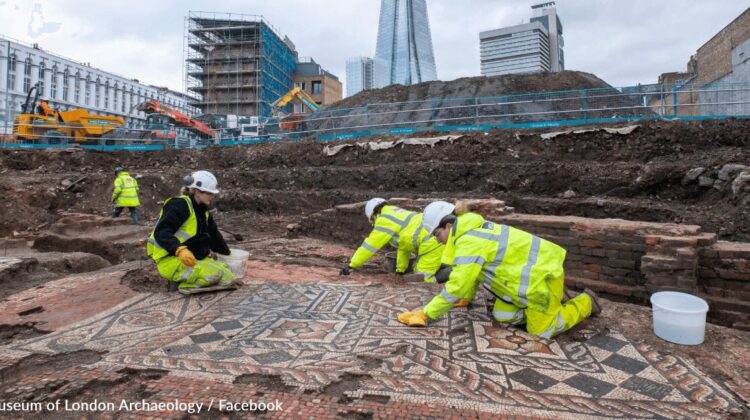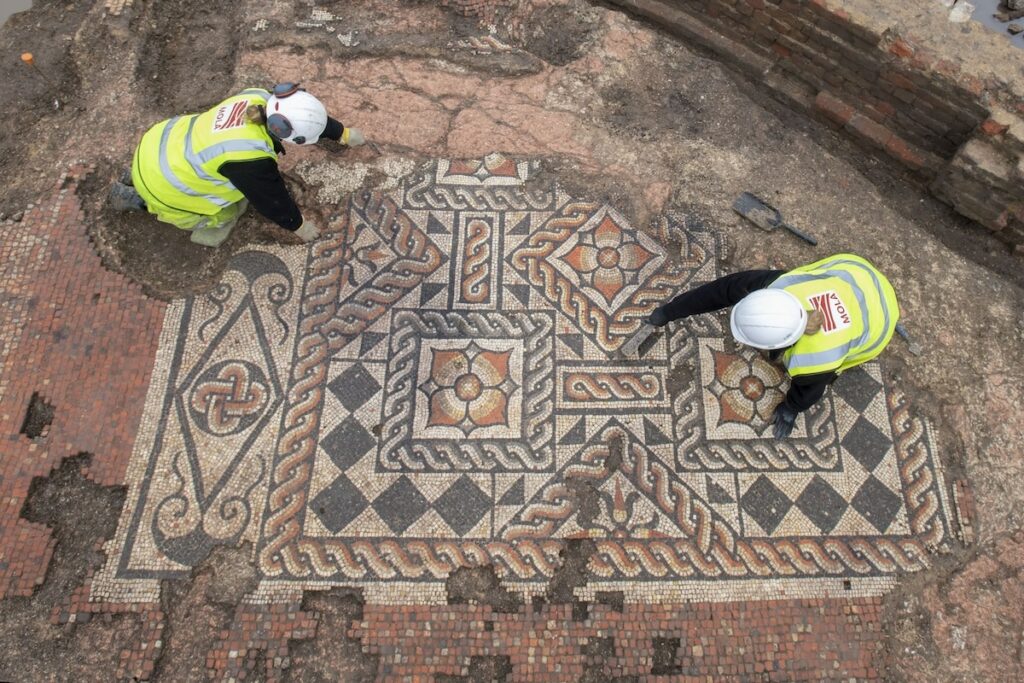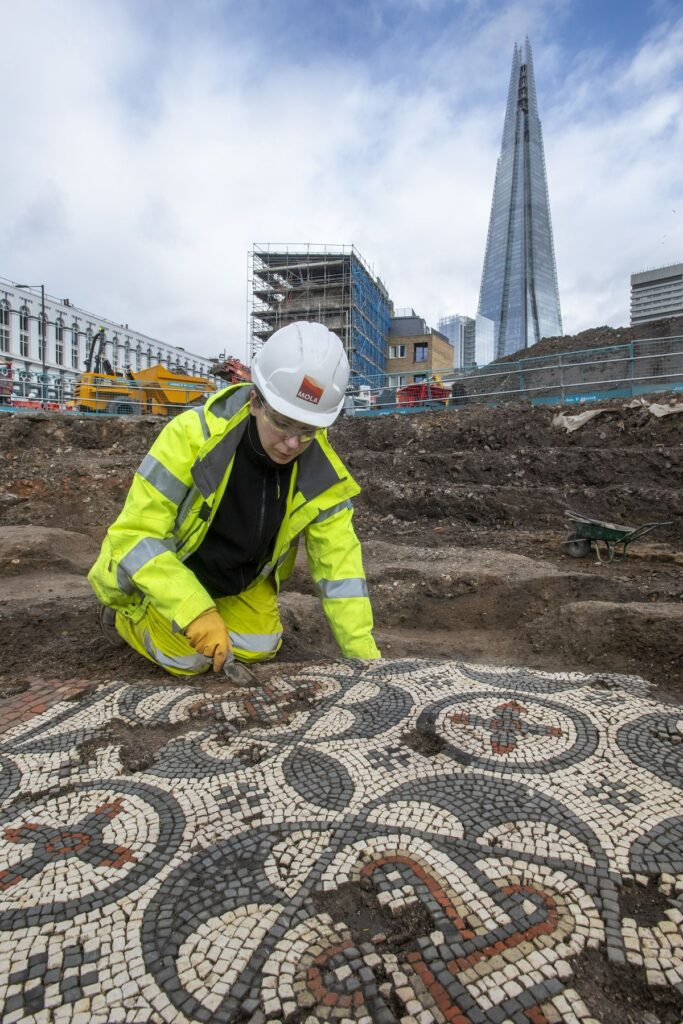
A remarkable discovery in South London has archaeologists buzzing with excitement. During excavations for a new development, a beautifully preserved Roman-era mosaic floor has been unearthed, estimated to be at least 1,800 years old. Described as a “once-in-a-lifetime” find, it’s the largest area of decorated mosaic uncovered in the city in the past half-century.
The vibrant double-paneled masterpiece was revealed by the Museum of London Archaeology (MOLA) while exploring a site in Southwark, destined to become the Liberty of Southwark, a multiuse development. Experts from MOLA will be meticulously assessing the mosaics on-site this week before transporting them to the museum for further conservation. The long-term goal is to put these treasures on public display.

For Antonietta Lerz, a senior archaeologist who supervised the excavation, this discovery is truly extraordinary. “The size, rarity, and preservation” of the mosaics make them a “once-in-a-lifetime” find, she shared in an email.
During Roman rule in Britain (mid-1st to early 5th century), their capital, Londinium, flourished in what is now modern-day London. Southwark, known to hold numerous Roman relics, has yielded various finds in the past, including coins, jewelry, and copper bowls.
According to a press release announcing the discovery, the larger of the two mosaic panels dates back to the late 2nd or early 3rd century. The room it adorned “was clearly in use for a longer period of time,” the release highlights.

“Astonishingly, traces of an earlier mosaic underneath the one currently visible have been identified,” the release continues, suggesting renovations in the room throughout its use, possibly to keep pace with trends.
“Combined, the two panels form the largest area of decorated mosaic discovered in London in the past 50 years,” Lerz emphasized. “Not only do we have the mosaics themselves, but we can also see part of the room where they were laid.” These features indicate the room may have been a wealthy residence’s dining space or a mansio, a Roman rest stop for travelers.
The news release elaborates, “Given the size of the dining room and its lavish decoration, it is believed that only high-ranking officers and their guests would have used this space.” While the building’s complete footprint is still being unearthed, current findings suggest a vast complex with multiple rooms and corridors surrounding a central courtyard.

Lerz marvels at the mosaic’s “remarkable” condition, considering the dramatic changes Southwark has undergone over the past millennia, including “the 17th-to-19th-century development of the site.”
The significance of the mosaic lies in its panels offering a glimpse into “the character of the area and the people who lived there,” Lerz explains. “It was a diverse area, but this discovery shows there were also fine buildings and homes where the prosperous in society lived.” Notably, a large Roman building, believed to be a wealthy family’s private residence, has also been discovered near the Liberty of Southwark site.

This mosaic serves as a powerful illustration of “the rich and complex history of this site and London as a whole,” says Puja Jain, a senior property developer at Transport for London, co-developing the Liberty of Southwark with real estate firm U+I. Henrietta Nowne, a senior development manager for U+I, echoed the sentiment, stating in the press release, “We never expected a find on this scale or significance.”

Leave a Reply